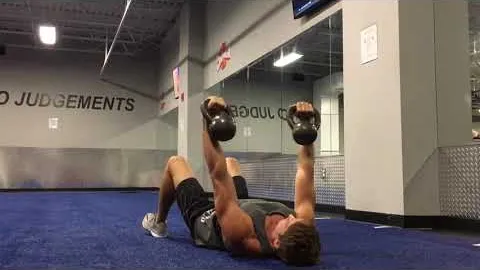
The kettlebell chest press is a highly effective exercise that targets the muscles of the chest, shoulders, and triceps. As a compound movement, it engages multiple muscle groups and requires the use of a kettlebell to add resistance. This exercise is not only great for increasing upper body strength but also for improving muscular endurance and stability. In this article, we will provide a comprehensive guide to performing the kettlebell chest press correctly and safely, along with its benefits and variations.
Muscle Development: The kettlebell chest press primarily targets the pectoral muscles (chest), deltoids (shoulders), and triceps (back of the arms). Regularly incorporating this exercise into your workout routine can help increase muscle size, strength, and definition in these areas.
Functional Strength: The chest press movement mimics common pushing actions encountered in daily activities and sports, such as pushing open a door or lifting heavy objects. By strengthening the muscles involved in these movements, you enhance your overall functional strength.
Core Stability: In addition to targeting the upper body muscles, the kettlebell chest press also engages the core muscles. This exercise requires stabilization of the torso to maintain proper form and balance while pressing the kettlebell overhead.
Time Efficiency: The kettlebell chest press is a compound exercise that works multiple muscle groups simultaneously, allowing you to maximize your workout time. It is an efficient way to engage your upper body muscles in a single movement.
To perform the kettlebell chest press correctly and effectively, follow these steps:
Set Up: Start by selecting an appropriate weight kettlebell that allows you to maintain proper form while still challenging your muscles. Lie flat on a bench with your feet flat on the floor and your knees bent. Hold the kettlebell with both hands at chest level, palms facing away from the body.
Engage Your Core: Before beginning the movement, engage your core muscles by drawing your navel towards your spine. This will help stabilize your torso throughout the exercise.
Press the Kettlebell: Exhale as you press the kettlebell upwards towards the ceiling, fully extending your arms while keeping a slight bend in your elbows. Maintain control of the kettlebell throughout the movement.
Lower the Kettlebell: Inhale as you lower the kettlebell back to the starting position, allowing your elbows to bend and your arms to come down to chest level.
Repeat: Perform the desired number of repetitions, maintaining proper form and control throughout the exercise.
To ensure you get the most out of your kettlebell chest press and avoid potential injuries, watch out for these common mistakes:
Arching the Back: Avoid excessive arching of the back during the chest press. Maintain a neutral spine position by engaging your core muscles.
Locking Out the Elbows: While performing the exercise, avoid locking out your elbows at the top of the press. Keep a slight bend in the elbows to prevent unnecessary strain on the joint.
Using Too Much Weight: It is important to choose a kettlebell weight that challenges your muscles without sacrificing proper form. Using a weight that is too heavy can lead to poor technique and potential injuries.
Rushing the Movement: Focus on performing each repetition with control and proper form. Avoid rushing through the exercise, as this can decrease its effectiveness and increase the risk of injury.
To add variety to your workout routine and target different muscle groups, consider incorporating these kettlebell chest press variations:
Single-Arm Kettlebell Chest Press: Perform the chest press with only one arm at a time. This variation increases the demand on your core muscles for stabilization and improves muscle imbalances.
Incline Kettlebell Chest Press: Adjust the bench to an inclined position, typically 30-45 degrees. This variation primarily targets the upper chest muscles while providing a change in muscle recruitment.
Alternating Kettlebell Chest Press: Start with both kettlebells at chest level, then press one kettlebell up while simultaneously lowering the other kettlebell. Alternate the pressing and lowering, providing a challenging twist to the exercise.
The kettlebell chest press is an effective exercise for building upper body strength, toning the muscles of the chest, shoulders, and triceps, and improving core stability. By following the proper technique and avoiding common mistakes, you can safely reap the benefits of this compound movement. Incorporating variations of the kettlebell chest press into your workout routine adds variety and challenges different muscle groups. Remember to start with an appropriate kettlebell weight and gradually progress as your strength increases. Now you have the knowledge to perform the kettlebell chest press with confidence and achieve your fitness goals.
If you're looking for a gym, fitness club or yoga studio, you've come to the right place.
You can find information about gyms in your area. Browse catalog of gyms and find gyms with classes which are you looking for.
On gym page you can find simple information like address, phone or website. You can find list of available classes. You can check availability of personal training or small group classes. On place page you can also see information about open hours.
You can find gyms near you with amenities, courts, studios and equipments.
Use our map to find gym at your city or district.
In Gym Navigator you can find list of exercises with movies for many body parts.
You can browse exercises catalog and find exercises the best of you.
You can also find exercises grouped into workout plans, which you can use to improve you body. Each routine show you exercises one by one and give you possibility to count you progress and count down rest time.